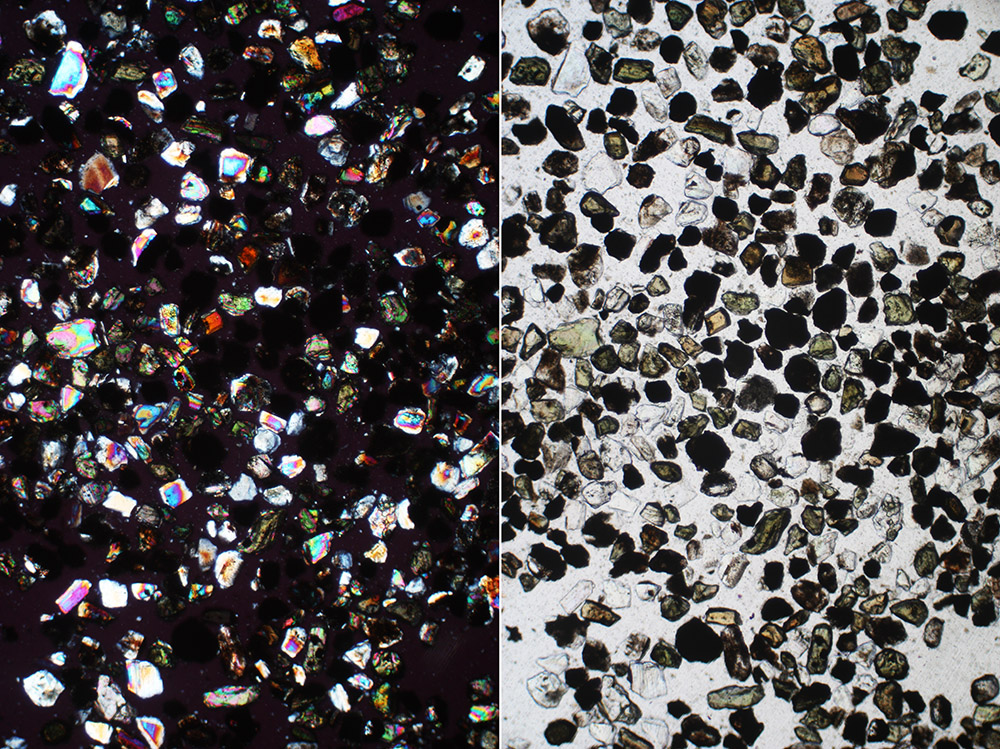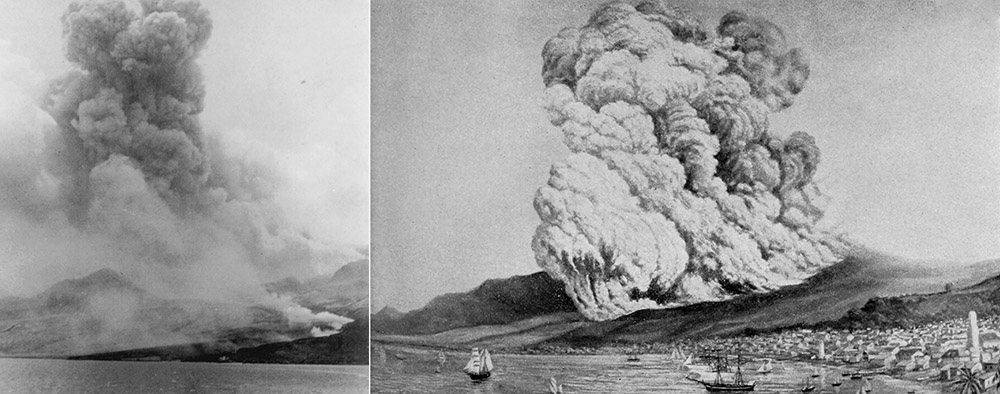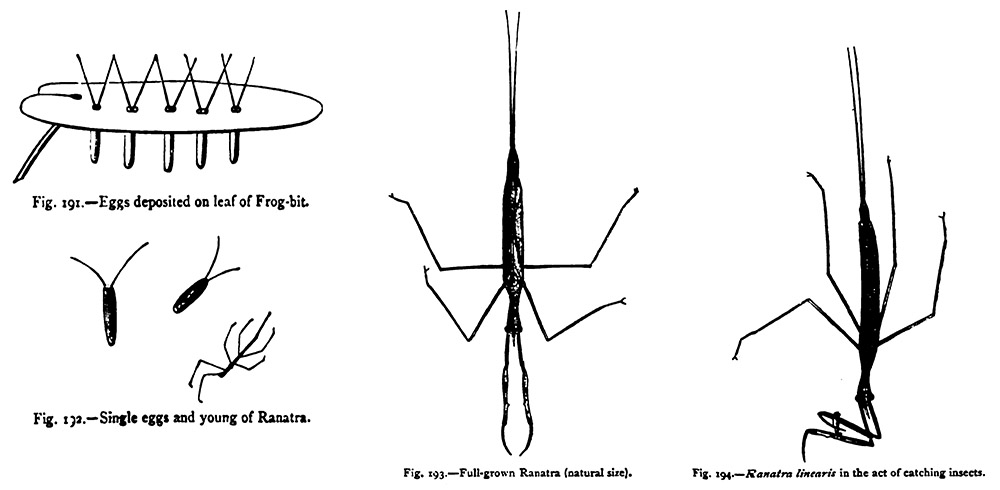Collis Willmott, 1837 - 1920
by Brian Stevenson
last updated December, 2022
Collis Willmott appears to have been a fairly typical upper middle-class Englishman of the Victorian era, having free time and a bit of extra income to spend on hobbies. In Willmott’s case, these were appreciation of the natural world, which included investigations with the microscope. He was elected as a Fellow of the Royal Microscopical Society in 1879. He also served as Secretary of the Hackney Microscopical and Natural History Society from its inception in 1877 until many years afterward.
Willmott undoubtedly prepared a large number of microscope slides during his many decades of microscopical studies. With one exception, I have not found evidence that Willmott labeled slides with his name, or advertised to sell or exchange them. The exceptional case is a slide of volcanic ejecta from the 1902 eruption of Mount Pelée, Martinique (Figures 1 and 2). The mounter’s signed affirmation of “guaranteed genuine” suggests that Willmott sold this slide.

Figure 1.
A microscope slide by Collis Willmott, of “volcanic dust from Mount Pelée, Martinique”. That volcano erupted violently in 1902, killing approximately 30000 people. It was the only major eruption during Willmott’s lifetime. His declaration that the material was “guaranteed genuine” implies that this slide, and probably others, were prepared for sale. How a house decorator in Hackney, London acquired such material is not known.

Figure 2.
Magnified views of volcanic dust from Mt. Pelée (Figure 1). Photographed between crossed polarizing filters (left) or brightfield (right) with a 3.5x objective lens and C-mounted digital SLR camera on a Leitz Ortholux II microscope.

Figure 3.
Photograph and contemporary engraving of the 1902 eruption of Mount Pelée. Adapted for nonprofit, educational purposes from https://afsa.org/unlucky-consul-thomas-prentis-and-1902-martinique-disaster and
https://www.earthmagazine.org/article/benchmarks-may-8-1902-deadly-eruption-mount-pelee .
Collis Willmott was baptized at the parish church of St. John of Jerusalem, Hackney, Middlesex, on July 23, 1837. His ages on census and other records indicate that he was born only a few days or weeks before that date. He was at least the sixth child of seven children, and the fourth boy. His parents were William and Mary Willmott. Father William was described on Collis’ baptism record and in census records as a “plumber, painter, and glazier”. The 1851 census noted that William employed “4 men and 1 apprentice”. The Willmott family also employed a domestic servant in 1841.
The 1851 census recorded that 13 year-old Collis worked as a “clerk to commission agent”.
When he married Emily Collier on November 8, 1859, twenty-two year old Collis was working as a “house decorator”. The 1861 census recorded his occupation as “contractor”. Similar job descriptions were listed throughout Willmott’s life, indicating that he owned a business that renovated and outfitted the interiors of houses.
Willmott was instrumental in the 1877 founding of the Borough of Hackney Microscopical and Natural History Society. The Entomologist magazine then reported, “The objects of this Society are the cultivation of biological tastes in its district, and communication between members through its meetings, which are held twice a month, at 194, Mare Street, Hackney. Country excursions are frequently organised during the season. The honorary secretary is Mr. C. Willmott.” The original President was famed microscopist, botanist, author, and publisher Mordecai C. Cooke (1825-1914).
Proceedings of the Hackney Society were frequently published in popular magazines, thanks to Willmott. For example, this from Hardwicke’s Science-Gossip in 1877, “At the last meeting, held October 2nd, Dr. R.C. Kibbler gave a valuable paper on the ‘Anatomy of Insects’, the first of a series, beginning with the External Anatomy. It was illustrated with some beautifully executed diagrams. Six new members were balloted for and elected, and five nominations taken. At the last excursion of the Society to Epping Forest, Woodstreet Station, I was fortunate enough to secure Plumatella repens. I am informed that it has never been taken there before.-Collis Willmott.”.
Collis Willmott was elected as a Fellow of the Royal Microscopical Society in 1879.
Willmott frequently wrote articles on a variety of biological topics over the years, indicating both a broad enthusiasm for nature and an interest in communicating his observations with others. Some examples include descriptions of a rare golden eagle and a nutcracker in Hackney, wild Sagittaria sagittifolia flowers, mating flights of butterflies, and his captive breeding of the aquatic insect Ranatra linearis (including cannibalism among newly-hatched insects). The last report include illustrations, presumably produced from Willmott’s drawings (Figure 4).
A further indication of Willmott’s wider interests, in 1882 he advertised to sell his sunflower seeds, “Giant sunflower seed, from plants over 10 ft. high; flowers 60 in. in circumference; leaves, 26 in. 1s per dozen; stamps with order – Collis Willmott, Triangle, Hackney”.
In 1884, “At the annual general meeting of the Hackney Microscopical and Natural History Society held on March 19 at the Morley Hall, Hackney, a valuable microscope was presented to the honorary secretary by the members. The president, Dr. M.C. Cooke, in presenting the testimonial, made some highly eulogistic remarks upon the energy and unremitting attention given by the honorary secretary during the seven years of the existence of the Society, to which he ascribed its present flourishing condition. A silver plate bearing the following inscription was attached to the instrument: ‘Presented to Collis Willmott, Esq., by members of the Hackney Microscopical and Natural History Society in appreciation of his services as Hon. Secretary, 19th March, 1884." (Nature, Vol. 29)
Willmott retired to Edmonton, Middlesex during the late 1800s. Some insights on his home and life were provided in a letter that he wrote to The London Standard in 1901 (as reproduced in Safety Maintenance & Production): “I think, perhaps, the two following circumstances may be of interest and caution to many. To-day I accidentally looked at the escape pipe from the heating apparatus in my conservatory, and found that it was completely stopped, the rosecutter bee having chosen the open end of same in which to deposit her eggs, wrapped up in the cut leaves in the usual way. If this had not been discovered and removed, an inexplicable explosion might has been caused. Again, one day in July, we were alarmed by the smell of fire. After searching some time there was discovered in the library a graphoscope, which had been used overnight and left with the lens set. This had focused the rays of the sun on the mahogany, which was quite charred and smoking merrily. Had the material been more inflammable, another mysterious fire might have been recorded.",
Collis' wife, Emily, died in 1902. The 1911 census records Willmott as living in Edmonton with four unmarried daughters. He passed away on March 31, 1920.

Figure 4.
Illustrations of life stages of Ranatra linearis water bugs. He described capturing, breeding, and the subsequent raising of young insects in “Hardwicke’s Science-Gossip” in 1879. The illustrations were not specifically attributed, so were presumably provided by Willmott.
Resources
Carrington, John T. (1880) Vanessa antiopa, The Entomologist, Vol. 13, page 278
Cooke, M.C. (1902) “A big mushroom - I have just been informed by Mr. Collis Willmott that he gathered a remarkable mushroom at Woodham Ferris, Essex, on the 28th of August, 1902, which deserves a record. It was a specimen of the Horse Mushroom (Agaricus arvensis), which most persons consider equal, and some superior, for its edible qualities, to the common mushroom. The individual in question measured fifty-one inches in circumference, which would be equivalent to a diameter of seventeen inches, and its weight was over three pounds. It is not uncommon during a wet season to meet with specimens twelve inches in diameter, and even more, but I should consider the above to be abnormally large. Rather a full dish or a bachelor's breakfast.”, Journal of the Essex Field Club, pages 44-45
England census and other records, accessed through ancestry.com
The Entomologist (1877) New natural history society, Vol. 10, page 173
Gardening Illustrated (1882) Advertisement from Collis Willmott, Vol. 4, March 18 issue, page ii
Hardwicke’s Science-Gossip (1877) Borough of Hackney Microscopical and Natural History Society, Vol. 13, 255
Hardwicke’s Science-Gossip (1878) The Hackney Microscopical Society, Vol. 14, page 137
Hardwicke’s Science-Gossip (1879) The History of Ranatra linearis, Vol. 15, pages 252-253
Hardwicke’s Science-Gossip (1889) “Hackney Microscopical and Natural History Society: President, M.C. Cooke, M.A., LL.D., A.L.S.; Hon. Secretaries, Collis Willmott, F.R.M.S., J.T. Powell.”, Vol. 25, page 42
Journal of the Royal Microscopical Society (1879) Members “1879, Willmott, Collis, Triangle, Hackney, E.”, page lvii
Nature (1884) Report on the annual general meeting of the Hackney Microscopical and Natural History Society, Vol. 29, page 513
Probate of the will of Collis Willmott (1920) “Willmott Collis of Brooklands Upper Edmonton Middlesex died 31 March 1920 Probate London 19 May to Fanny Emily Willmott spinster and Harold Edgar Willmott builder and estate agent. Effects £6849 10s 6d”, accessed through ancestry.com
Safety Maintenance & Production (1901) Mysterious Fires, page 76
Willmott, C. (1875) Golden eagle in Chatteris, The Zoologist, page 4703
Willmott, C (1879) The History of Ranatra linearis, Hardwicke’s Science-Gossip, Vol. 15, pages 252-253
Willmott, C (1884) Sagittaria sagittifolia, Hardwicke’s Science-Gossip, Vol. 20, page 238
Willmott, C. (1875) Recent occurrence of the Nutcracker in Kent, The Zoologist, pages 480-481



